

CELEBRATE CO-SPECULATION!
BY YOU AND THE RESPONSIBLE FUTURING CREW
START WATCHING, LISTENING...
ut.onl/approach-by-cristina


IntrobytheDreamTeam:ut.onl/responsible-futuring
Masterclass:ut.onl/digital-transformation


Photo: Cristina Ionaş
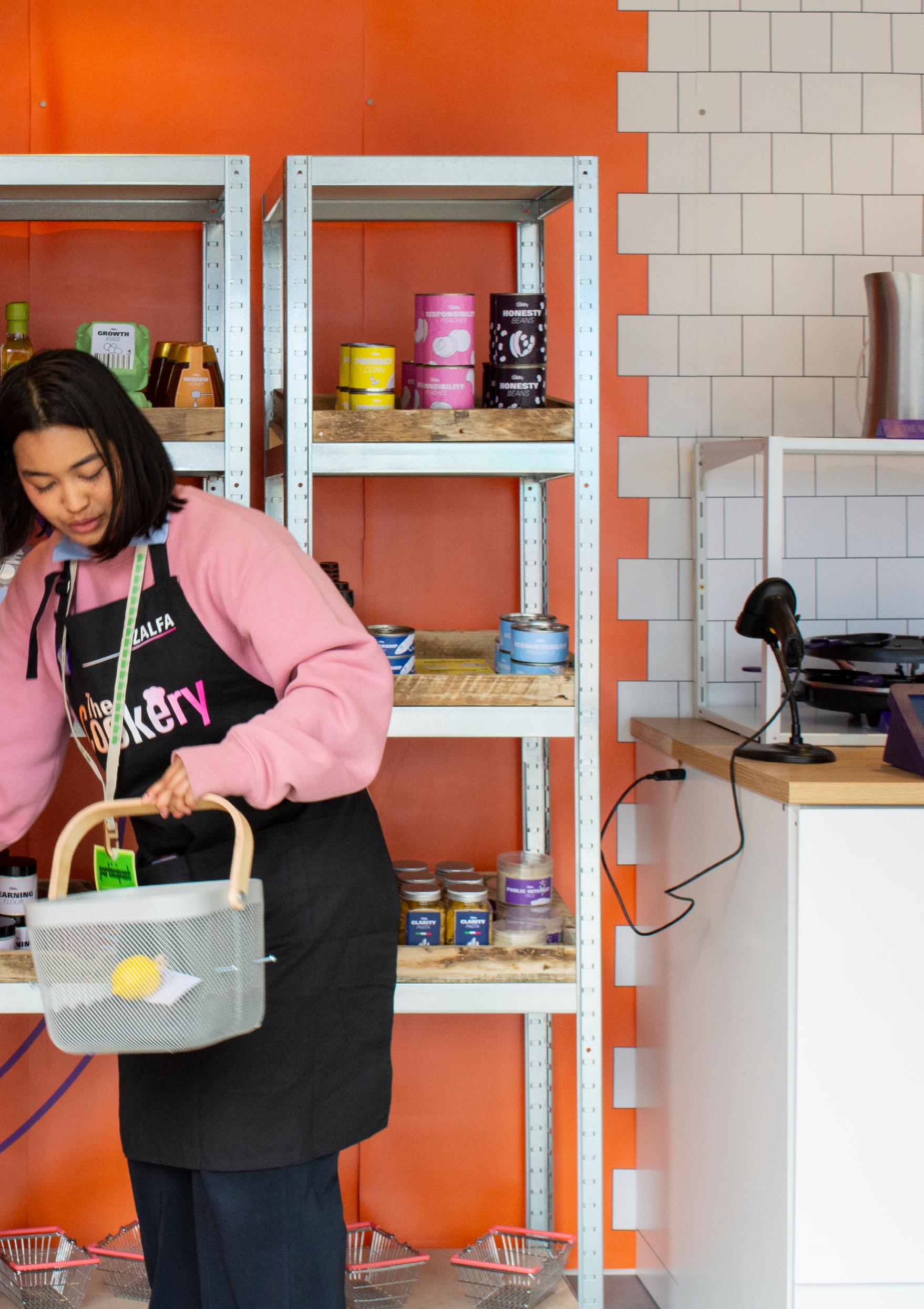
WHAT IS RESPONSIBLE FUTURING?
CO-SHAPING RESPONSIBLE FUTURES THROUGH TRANSDISCIPLINARY
CO-SPECULATION
Societal challenges have a unique capacity - they compel us to reimagine the status quo and to shape new possibilities. Whether we consider combatting misinformation, tackling healthcare shortages, enhancing mental health support, or preserving the Earth's ecosystems, these challenges prompt us to reflect: How can we cultivate a long-term mindset while crafting solutions for urgent societal issues? How can we experiment with diverse collaboration forms to grasp the impact of societal challenges on various communities and nurture our collective imagination? How can we avoid immediate solutionism to understand the perspectives, relations and opportunities that lie in having a systemic understanding of these challenges?
At DesignLab, we are committed to shaping responsible pathways to address societal challenges. To this end, we have developed an approach called ‘Responsible Futuring’. Through this approach, we experiment with methods and tools to foster transdisciplinary collaboration and futures thinking. This is what we call ‘spaces for transdisciplinary co-speculation’. It entails understanding and learning from different worldviews and controversies, as a vehicle to foster collective imagination and speculate about futures ahead of us. This process is critical because, to identify preferable and alternative futures that inspire us to act, we need to explore, contrast, and understand ‘what if’ scenarios from multiple lenses. The approach blends different design disciplines focusing on speculative design (Dunne and Raby, 2013) with a focus on collaborative speculation (Light, 2021); design fiction (Bleecker, 2022) and friction (Forlano and Matthew, 2014) together with systemic design (Jones, 2014), participatory design (Brandt et al., 20212) with an emphasis on counter participation and constructive conflict (DiSalvo, Tironi, 2018; Tironi, 2020).
Being a futures thinking approach, Responsible Futuring can act as a compass for communities to learn from and with each other by achieving the following:
Reflection (and reflexivity): It fosters a reflective attitude to critically consider the long-term and societal impacts of our actions, acknowledging our agency to shape our future.
Dialogue: It supports dialogue across different disciplines and communities, opening discussions around values, experiences and knowledge flows that are critical while addressing challenges.
Collaboration (and disruption): It supports processes of collaborative speculation to nurture our collective imagination, necessary to disrupt existing patterns that perpetuate the existence of those challenges in the first place.
Innovation: It has generative potential to come up with ideas or initiatives that we might have not considered before.

Connect and Relate

Understand and Frame
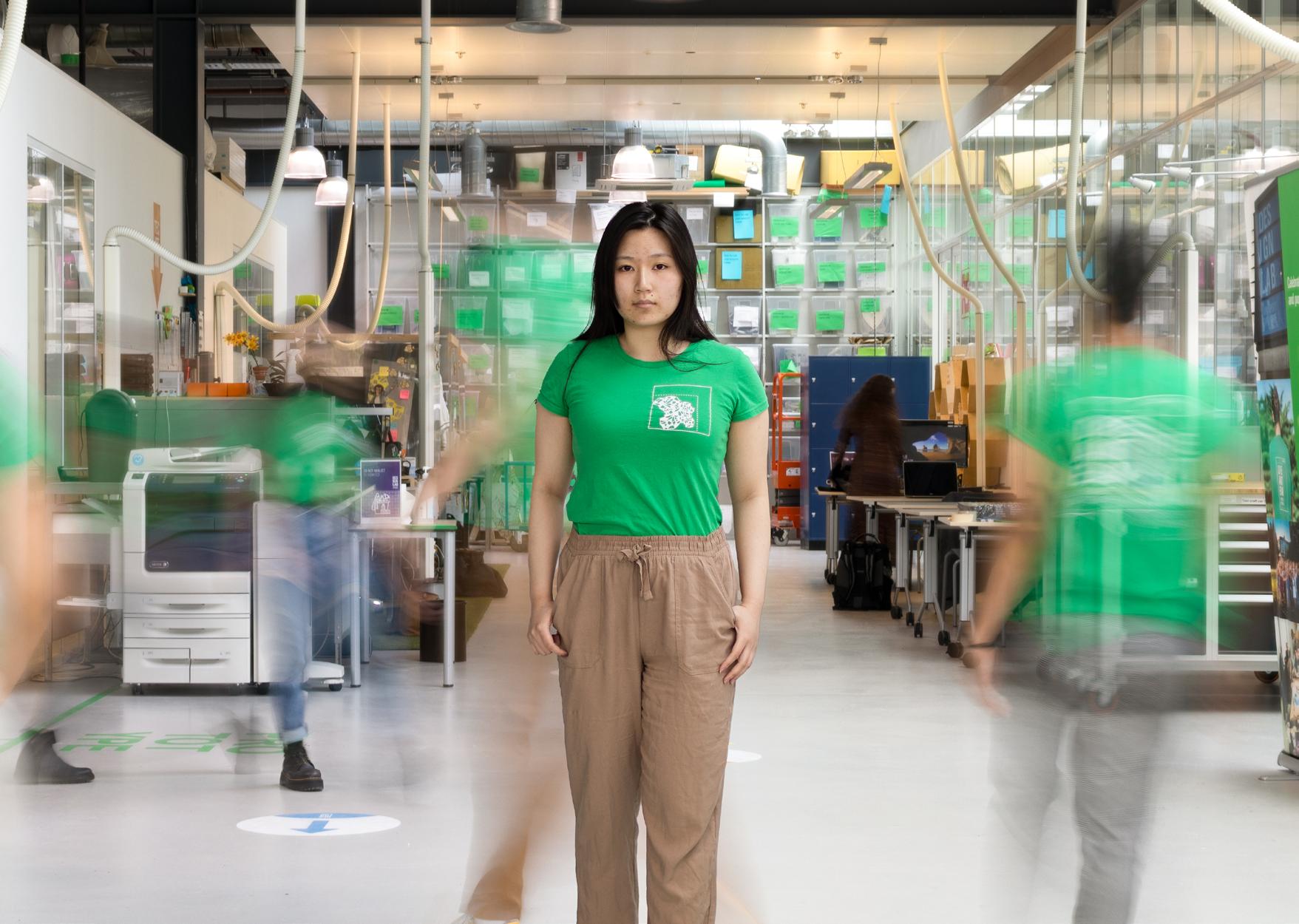
Imagine and Ideate

Reflect and Reframe
To engage in this process and achieve these goals, we have structured the approach in five phases:
Articulate the societal challenge: we have come to recognise that this step can feel overwhelming. Our inclination to immediately dive into solutions and formulate challenges as closed-ended problems has taught us that it is essential to start with a thorough exploration of the challenge at hand. By formulating the challenge with others, using communities’ own words, it is possible to foster a shared sensemaking process that paves the way forward for collaboration.
Connect and relate diverse worldviews and perspectives: while collaborating with communities that involve citizens, public and private sectors, academia, or NGOs, there are diverse perspectives and values at stake, very important to consider while addressing the challenge. Even non-human actors encapsulate values and experiences that are worth surfacing like efficiency and optimisation for technology, or relatedness and holism for nature. Ignoring this diversity could lead to non-constructive conflict and potentially hinder the opportunity to learn from each other. We consider it crucial to experiment with tools and techniques that help to surface a diversity of worldviews and perspectives around challenges, and that support making constructive use of conflicts, dilemmas and controversies that become apparent in this process.
Understand and frame the challenge from a new light: societal challenges are systemic, and actors that can influence the challenge or are impacted by it are part of a complex web of conflicts and complementarities.
Exploring the interdependences at different levels, and how their value-systems complement or conflict with one another can inspire us to see frames that generate insights and help us see how the way we frame challenges influences how we look for solutions.
Imagine and ideate potential futures: co-speculating how different futures could look can give us insights into the experiences, activities, and worlds we might inhabit depending on the actions we take in the now. The main goal is not to predict, forecast or create scenarios that will be a projection of existing practices. The main purpose of imagining and ideating futures is to engage in ‘what if’ questions to make futures tangible and learn from them.
Reflect and reframe to enrich our current practices: futuring is not complete without grounding the lessons in the present. The process of consolidating the insights we have gained from our tangible futures involves crafting a preferable future scenario, and delineating the steps we need to take to (collectively) achieve it. Many times, this involves coming up with guiding principles that can inform collaboration or more specifically short-, medium- or long-term actions planned in a roadmap.
We have put Responsible Futuring into practice in learning trajectories and projects in our campus and beyond. Nothing explains better how something works than seeing it in action. Sharing experiences in ‘real life’ cases works as well so, for now, we focus on three experiences that we have had, addressing three societal themes: digital society, health innovation and climate resilience.
WEMULTIPLEEMBRACE PERSPECTIVES
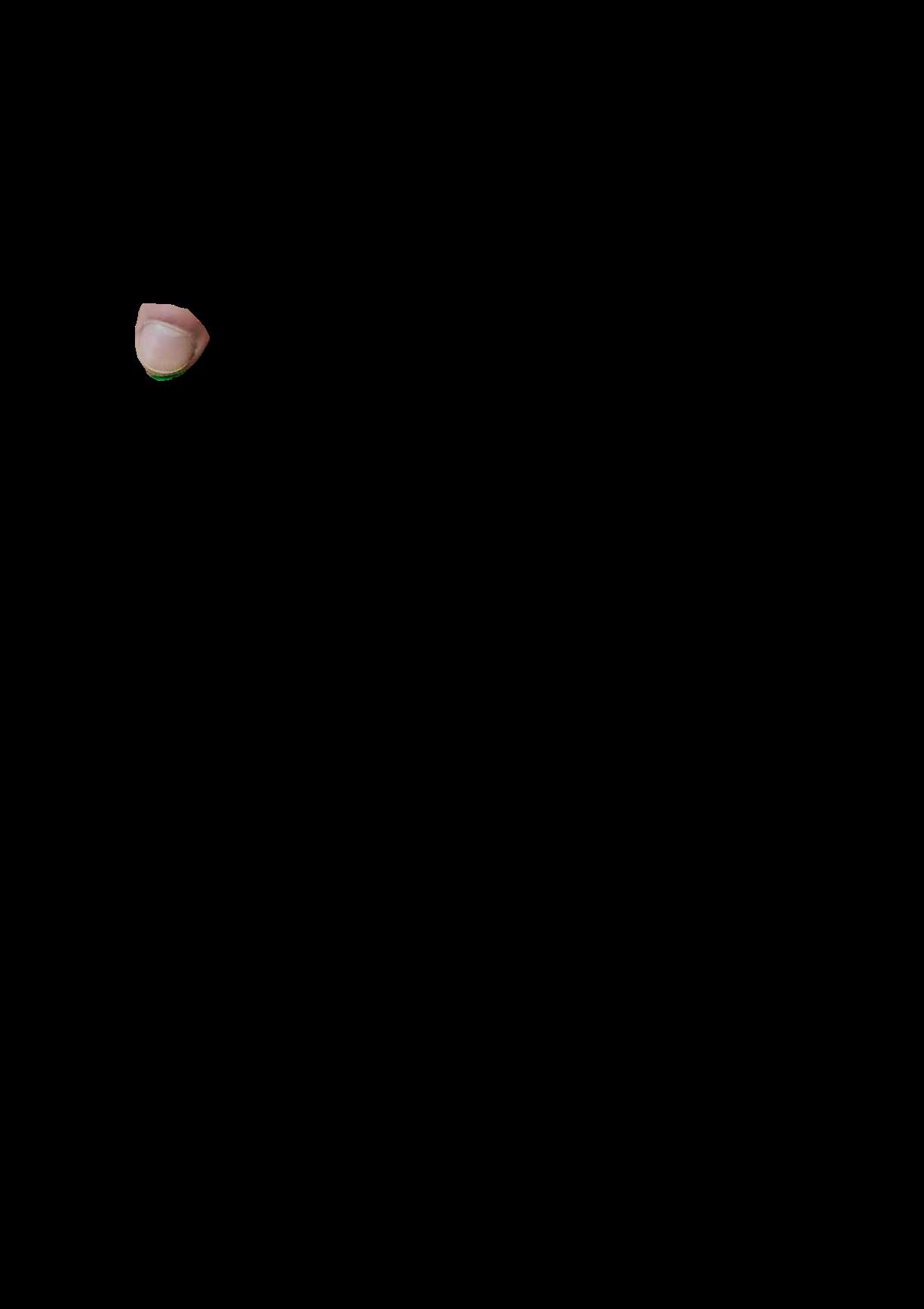

Photo: DesignLab
MULTIPLEEMBRACE PERSPECTIVES

-4WE MAKE FUTURES TANGIBLE
-6WEHAVEFUN!
-5WE STIMULATE MORAL IMAGINATION
CASES

DIGITAL SOCIETY
DIGITAL TRANSFORMATION FOR INSURANCE COMPANIES AND TAX AUTHORITIES
In the spring and summer of 2022, we ran our first 4-day-long Responsible Futuring learning trajectory with a group of 12 practitioners working in the insurance and tax administration sectors. The main motivation to join this journey was to explore the long-term implications of ongoing digital transformation in their work: With an increasing use of AI and data collection for decision-making and day-to-day processes (like determining premiums, or identifying fraudsters), what are the potential implications for sustainable, responsible and inclusive practices? Are there any ways in which we could keep human agency in the rise of technology-driven processes? Can we capitalise on these (digital) transformations to foster sustainable and just practices?
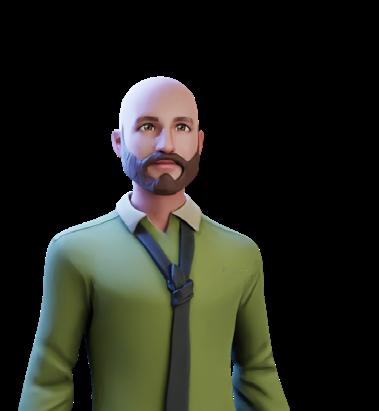






Participants articulated the challenges they found relevant to their own context. Two challenges focused on mobility and sustainability: one aimed to explore how to balance personal freedom and eco-friendly choices, and another one related to the provision of equitable mobility distribution for sustainability. A third challenge focused on exploring how to create a fair fiscal system in the Netherlands with the help of data-driven initiatives.
This was a 4-day long journey that took inspiring and unexpected turns. That is the beauty and power of co-speculation. During the experience, participants experimented with ways to reframe the challenge based on a systemic understanding of the involved actors and their values. For example, one of the groups explored how to keep a balance between freedom and eco-friendly mobility futures, identifying a shared willingness by stakeholders to embrace their own responsibility in developing eco-friendly mobility solutions and advocating for responsible policies. They therefore elaborated on the impact of moving from a vision focused on financial incentives and penalties (in a ‘polluter pays’ scheme) or a token-based system to manage and restrict individual ecological impact. Imagine a world where there is a collective limit for environmental impact, and everyone has a choice to decide how they spend their
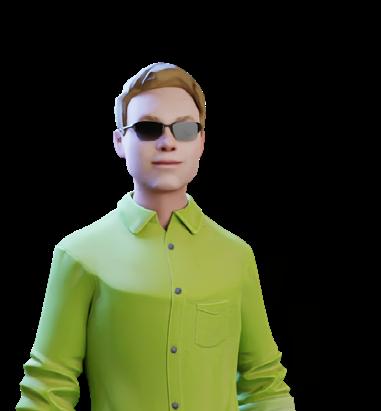

‘mobility tokens’. How would citizens experience receiving a ‘mobility basic income’ that they could use to access mobility services, regardless of their financial limitations? Desirable for some, undesirable for others, this exploration led to meaningful conversations about the essential mobility needs, freedom of choice, and economic disparities.
The participants also brought to life provocative and controversial futures that included ‘tax subscriptions models: who pays can use it’. Close your eyes and picture a future where governments have implemented a subscription-based or pay-per-use model for funding public services to encourage people to pay taxes for those services they want to support. What kind of social disparity would this cause? Or how could citizens actively participate in the creation of ‘tax package customisations’?
As we collectively envision futures, we have guided participants in identifying principles they wish to uphold while working together. While some of these guiding principles or actions may not have immediate practical applications, the process of exploring potential futures alongside others, and looking beyond the mere functionality of solutions, holds the promise of co-creating initiatives that benefit society and safeguard values that communities treasure.
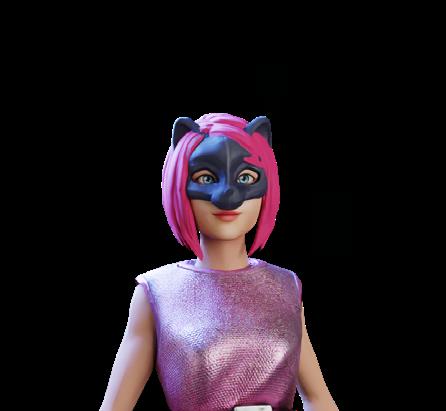



HEALTH INNOVATION
EXPLORING ALTERNATIVE IMAGINARIES OF HEALTH AND CARE TO CO-SHAPE RESPONSIBLE AND RESILIENT FUTURES
During the Dutch Design Week in 2022, we brought together a group of designers, design researchers, and practitioners and researchers working in the healthcare sector to define inspiring collaborative avenues to address our existing challenges in health and care. We explored the current situation from multiple perspectives. How do general practitioners experience a system where they need to act as gatekeepers? What is the perception of a person who feels a lack of support to tackle mental health problems? What are systemic obstacles that call for radical changes?
We started exploring the existing rationale and status quo in health and care. It became clear that a society (like ours) that focuses on individualism leads to a system focused on control and efficiency. The tasks, work and structures of health and care are reactive and problem-oriented, focusing on solving problems and looking for solutions (cure) instead of exploring means for prevention. The system is rigid, focusing on gatekeeping and often providing one-size fits-all interventions. On the positive side, healthcare professionals and caregivers are dedicated, competent and resilient. The main question therefore was: how to capitalise on the opportunities the complementarities between professionalised and social-informal care can offer?
While exploring alternative rationales for health and care it became clear that a shift towards nurturing communities, embracing mutuality fairness and happiness, and transcending old ‘healthcare myths’ would lead to supportive and regenerative practices that can help to address our current healthcare challenges in the long run.
What if health and care had a more communal focus tailored to contextual needs, strengthening the complementarities between informal and professional care? What if we adopted a more holistic and integrated approach, beyond prevention, striving towards chronic health, communal support, and flexibility? What if we embraced more regenerative practices, embracing the reciprocity of our actions and practices as part of a larger natural complex system?
One of the groups tangibilised a community with health hubs in local neighbourhoods, being physical spaces for people to learn, engage, and support one another. These hubs would combine citizen-initiated care with professional services to foster a holistic approach to well-being, and with an emphasis on life transitions. In this future, citizens would promote healthy behaviours, actively connect with nature, and engage with local food production, while professionals would offer experience and assistance.

Through making these futures tangible, we identified meaningful themes foreshadowing potential avenues for potential collaborations:
• How can we create a shared language to establish transdisciplinary collaborations in and for health and care to keep exploring alternative futures?
• How can we empower transdisciplinary communities to co-shape futures that nurture informal and professional care?
• How can we be ‘more forest’: transitioning towards a system based on transdisciplinary synergy and shared responsibility? (More connection, more lived experience, more reciprocity)
Although these questions require deep reflection and societal introspection, they can already inspire us to identify rationales that can contribute to addressing the pressing challenges in the healthcare sector in an empathetic and communal way.

CLIMATE RESILIENCE
LEARNING FROM CIRCULAR ECONOMY PRACTICES TO BRING BACK TO OUR OWN COMMUNITIES
In late May 2023, a transdisciplinary group of students from the USA visited DesignLab, to participate in a 2-day learning experience on Responsible Futuring. The purpose of their trip was to learn more about circularity and bring the lessons from this mutual learning experience back to their own communities in the US. The participants were interested in delving deeper into circularity for the fashion industry, food waste and disaster resilience. In this case, their Responsible Futuring experience took place before a design sprint, through which students were developing (collaboratively) specific solutions.
Imagine a future in which retail focuses on obtaining customer attention by showcasing their commitment to sustainability. In this future, there is a concept of ‘Grade A’ sustainability for retail practices and brands engage in friendly competitions to outdo one another in terms of their eco-friendly practices. Customers have information available in their fingertips, allowing them to make more conscious decisions knowing precisely what happened in the supply chain of the garments they are buying. As a result, the market has turned into an ecosystem where ethical considerations and personal values set the standards. What would it take to reach this future? Would customers hold institutions and the industry accountable? Who would set the sustainability grading and what kind of power relations would that give rise to?
And what about having a desirable future in which compost rebates exist at grocery stores and people can bring compost from wasted good and use this credit towards store tokens? What would it entail in terms of data concerns? What about a future where natural disasters would not cause any harm,
but they can produce large amounts of energy for communities to live during long periods of time? Would that cause social disparity or displacement?
Engaging in ‘provotyping’ and exploring futures, rather than aiming for immediate solutions provoked other ideas through speculation and encouraged the generation of diverse concepts. It became clear that the activities contributed to challenging assumptions and practices and, as one of the participants indicated: ‘We used this process to envision a future which was unsustainable and unsuccessful for humans as well as the environment. By doing this we identified weak points in our current society’.

Photo: DesignLab
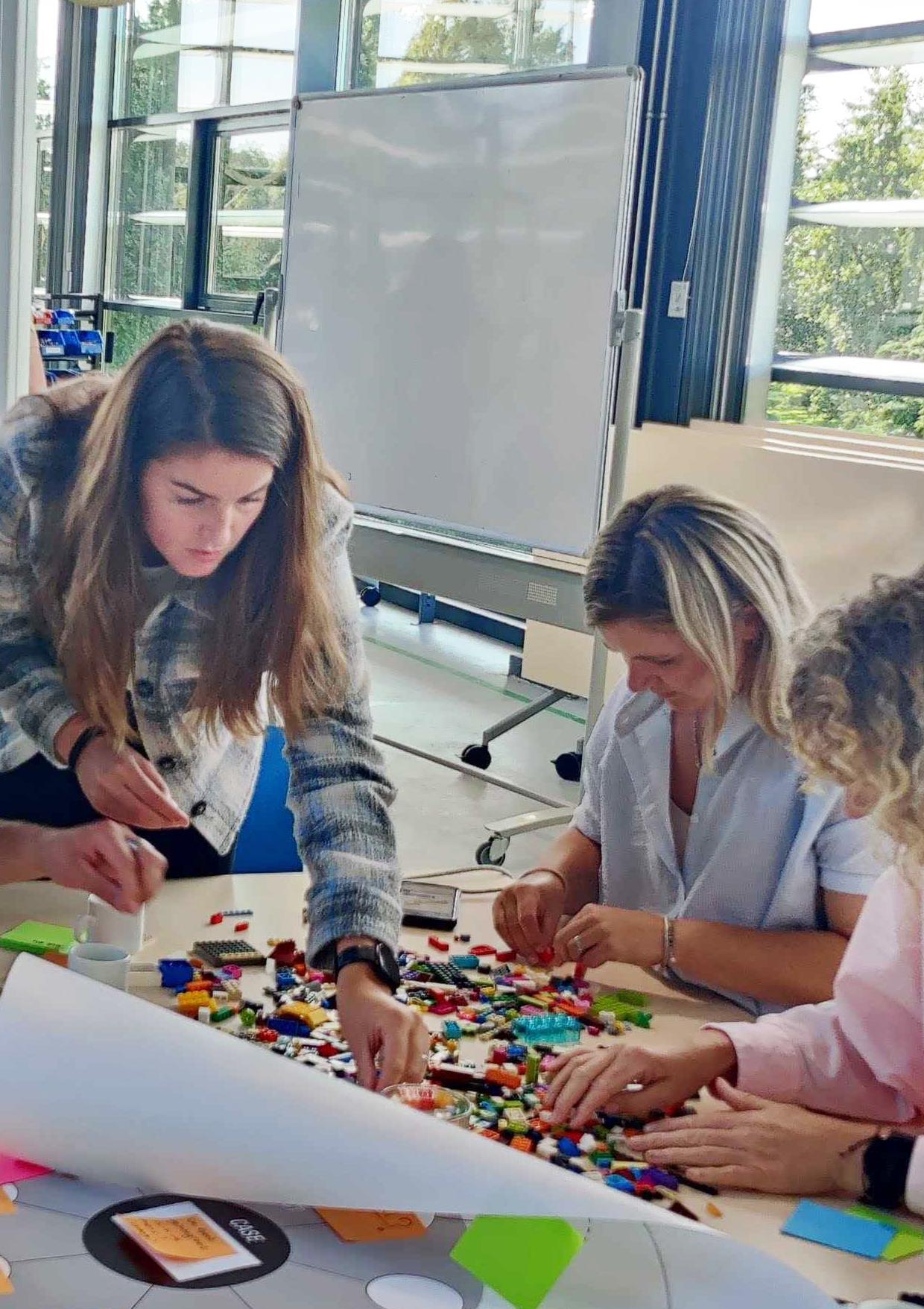
THROUGH THE EYES OF...
ALUMNI TRANSDISCIPLINARY MASTER-INSERT SHAPING RESPONSIBLE FUTURES
KAYA-MALIN FRANKE | CONNECT PSYCHOLOGY
Finding consensus among a pool of different ways of thinking is challenging. This process involves to let loose of institutions of norms and disciplinary glasses and to actively seek and be open to new perspectives. The teaching methods enabled to develop this mindset necessary to find connections and to span disciplinary boundaries. The benefits will outweigh the efforts!
NIKLAS BEXTEN | RELATE EUROPEAN STUDIES
To me, science lives from combining thoughts and theories and by molding them into practical applications that can help to improve the world by a bit.
Therefore, transdisciplinarity is an inevitable necessity to tackle societal challenges of today´s globalised world.
MANOUX KLAASSEN | UNDERSTAND BUSINESS ADMINISTRATION
The innovative teaching methods and continuous adaptation create a better understanding of yourself, transdisciplinary working and its tools and techniques. You learn to rethink and recombine - to seek to understand what the challenge means in the eyes of the involved. You might be surprised what is at the root. That mindset is a big plus!
ERIC VAN SCHAIK | FRAME COMPUTER SCIENCE
During the Master-Insert, you were constantly challenged to keep an open mind and approach a problem with different frames. For this, you’d need the perspectives of all your group members, and this generally brought about much more inventive solutions than I was used to.
MATS VAN DALEN | IMAGINE PHILOSOPHY OF SCIENCE, TECHNOLOGY & SOCIETY
The freedom to shape your own projects, an inspiring community, and a focus on connecting science and society is what attracted me. The curriculum allowed me to go beyond my academic profile and helped me in becoming a responsible transdisciplinary leader.
MICHAEL BUI | IDEATE INTERACTION TECHNOLOGY
The experiences from the Master-Insert taught me the importance of working in a transdisciplinary manner. Some of the projects we worked on were so complex, that our individual expertise was not sufficient to come up with novel and effective solutions; it was the synergy of our disciplines that led to the outcomes we are proud of.


Constantly reflecting on who you are as a person, what your role is in a team, and where you would like to see your team to be, helped to work together. In the MasterInsert, we worked in one team consisting of students with all kinds of disciplines. By reflecting on the process and ourselves it was possible to develop a common understanding and language and bring together our academic knowledge to tackle larger societal challenges.
LAURA MIESSEN | REFRAME TECHNICAL MEDICINE
Reframing is more than just talking and listening to each other. Putting your own frame aside, writing, drawing, reading, brainstorming on, acting and building a new perspective together with my creative and enthusiastic fellow Master-Insert students was one of the most fun and inspiring experiences I’ve had during my studies! Don’t break the LEGO, just bend the rules.
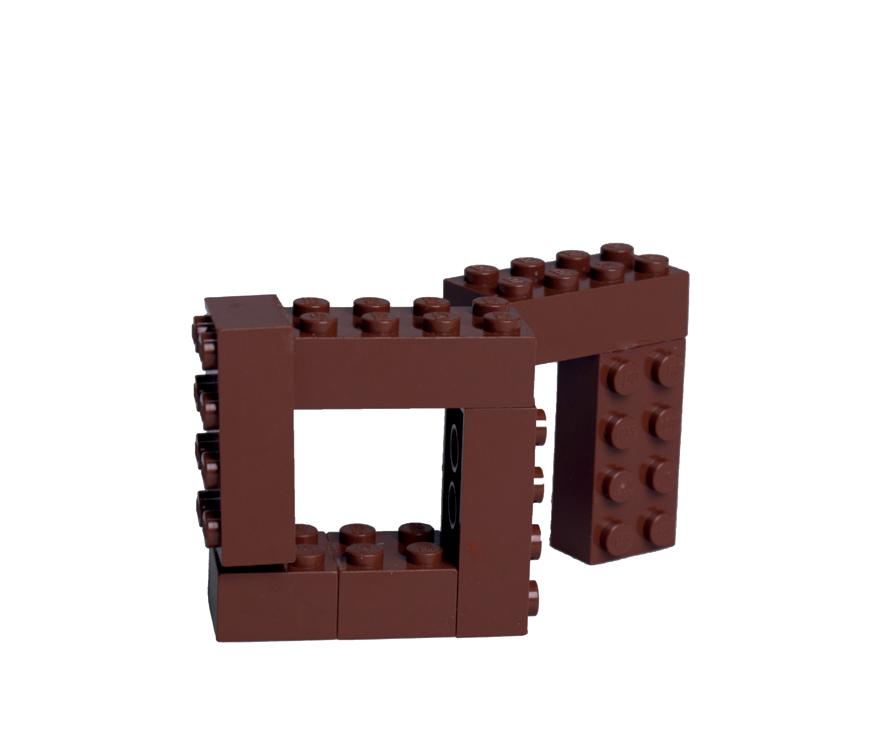



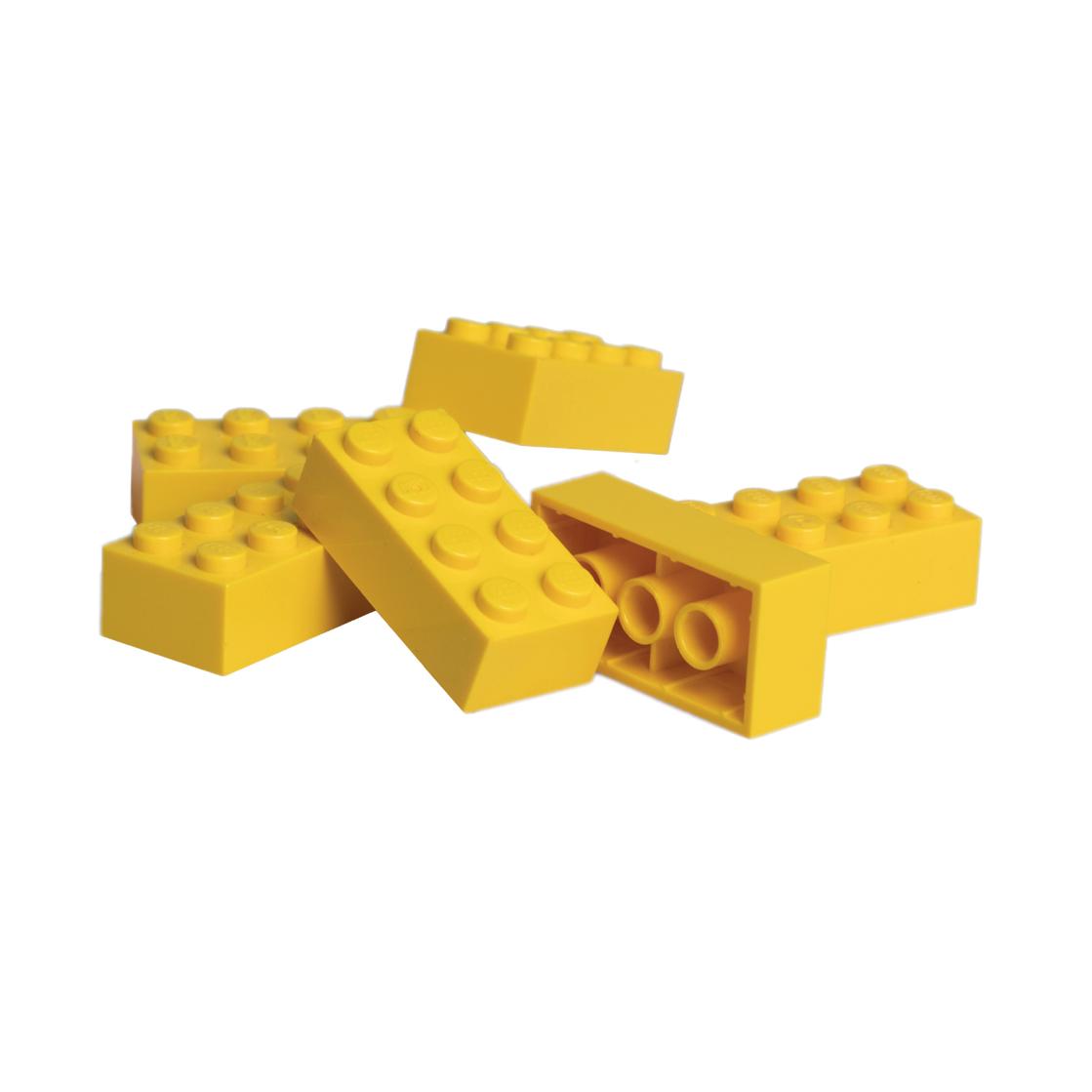

THE RESPONSIBLE FUTURING CREW
MAYA VAN DEN BERG PROGRAM MANAGER
What I am most proud of
How we all together as the crew from all our different positions, backgrounds and values are further developing and tailoring our approach. The mindset is always open, engaged and forwardthinking. We really like doing this together and we are all committed.
Most inspiring moment
Some months ago, our students presented our approach to the strategists of the Province Overijssel. After their round along the various tables to get a taste of its major aspects, the strategists one by one all indicated to be inspired by us and to see linkages between their daily work and Responsible Futuring.
JULIETA MATOS CASTAÑO RESEARCHER AND PROJECT LEADER
What I am most proud of
Our commitment to explore and experiment with ways to use our collective imagination to address societal challenges.
Most inspiring moment
During our sessions and engagements in projects: the 'magic' of going from a moment of doubt to daring to be bold and provocative while making futures tangible.
MAARTJE HUININK CO-DEVELOPER AND MODERATOR
What I am most proud of
Two years ago, we as a small crew started it all and managed to take the next steps. We developed a modular programme after moderating a significant amount of engaging workshops and masterclasses. Now people come to us that want to learn and apply the approach themselves.
Most inspiring moment
The ‘Apeldoorn Leergang’ masterclass with the whole experience designed around it. We managed to create a switch in the participants' mindsets: embracing creative imagination, speculation, and focusing on long term impact of your actions in the now. Secondly, the e-learning for 25 universities world wide, that we were able to develop in a short period of time, thanks to the team and all the content we already possessed.
MIRIAM ILIOHAN MANAGER DESIGNLAB
What I am most proud of
The team has really worked together to be able to pilot with so many different types of stakeholders from around the world in a 'short' period of time.
Most inspiring moment
The launch of our e-learning platform within one of the programmes at the d.School at Stanford University!
WIRO KUIPERS
NETWORK CREATOR
What I am most proud of
The application we made of Responsible Futuring in the nano-challenges for EnschedeLAB.
Most inspiring moment
Seeing participants of our workshops ‘get it’ - when they explore certain values and get to ‘provotypes’ (speculative designs of possible futures).
HENRIETTA LUKÁCS
JUNIOR MODERATOR
What I am most proud of
The session for UIF Hamburg, when I inserted a programme point myself, based on the combination of another tool with the approach.
Most inspiring moment
When people pointed out that the way that Responsible Futuring proposed them to think about their possible future was genuinely making them to think differently about the product/service/strategy they have been offering for society.
JANINE SWAAK MODERATOR
What I am most proud of
Getting junior moderators at the (main) stage (of moderating), because: they can do this! And: it makes the message and the impact of the approach even stronger. They are our future leaders.
Most inspiring moment
The workshop with junior moderator
Carithea in the lead for our guests from Paramaribo Polytechnic College Suriname and the feedback from our guests that in just 2,5 hours they learned how to think differently with multiple perspectives, open, considering solutions (instead of just problems).
CRISTINA ZAGA INITIATOR OF RESPONSIBLE FUTURING
What I am most proud of
I am proud of our community oriented ethos and that we strive to co-shape futures of justice, care and solidarity.
Most inspiring moment
Aha moments during sessions with our stakeholders: when they realise that they can indeed co-shape the future.
OTHER MEMBERS OF THE CREW
Alexandru Amariei, Rayhan Bayuaji, Jamila Blokzijl, Marike Boertien and Carithea Richards.
We have now been applying the approach in various very different projects, from European to very local levels and from trainings to workshops and collaborative processes, and adapting it to these contexts needs tailoring and teamwork. Especially the careful adaptations to situations in which co-creation and co-design are still new is where we can make a difference in showing how to do this in a constructive and impactful ways while having fun.
By making futures tangible, you enable groups of people to really envision possible futures, that they can learn a lot from. They are invited to play and imagine alternative futures. Participants become energised and motivated to actually co-shape the futures they want to live in themselves.
Change is truly transformative when we co-create visions that are hopeful, motivating and inspiring.
Not only hearing, but listening to one another is key in making a success together.
Maya
Maartje
Julieta
Miriam
(immersive) ‘experience design’ is crucial for optimal learning and application of RF.
Wiro
Always leave some room for serendipity in the curriculum you prepare for any kind of workshop or presentation. You should always be able to somewhat customise your plan for the audience, based on the initial interaction you are having with the team to make the experience a truly outstanding one.
It all starts with creating a space where people feel safe and respected and where open mindedness comes naturally. And: Responsible Futuring (RF) helps to unlock our imaginative power and we really need this power to create more sustainable and fair solutions/ approaches, so please take the stage and (also) get to the ‘board rooms’ (where decisions on big investments in our future take place)
Sometimes listening and taking a step back is more important than acting.
Janine
Henrietta
Cristina
PARTICIPANTS
Our study abroad programme introduced students to the idea of circular economy, a practice and approach to sustainability that has not yet gained significant traction in the US. The two-day Responsible Futuring workshop we undertook at the University of Twente provided students with a rich and useful way to apply what they learned on site visits in the Netherlands to design future-oriented circular economy projects in the US. The workshop enabled students to explore and embrace multiple perspectives that inform a complex societal challenge. It also provided them with the tools to design tangible projects that were both rigorous and playful. I cannot imagine a more practical and imaginative way to scaffold student learning in an intensive, high-impact study abroad programme that is designed to open up students’ understanding of how to respond to the planet’s most pressing challenges.
ASSOCIATE PROFESSOR JAMES MADISON UNIVERSITY
Being actively involved with the group and working on outside the box solutions without this being forced is a lot of fun. The methods took me to a point in a creative process where I genuinely surprised myself and others. Especially if you go back to the present step by step, you suddenly see that you have a realistic plan to get started with. That almost seemed like magic.
The approach helps you look for a future-proof solution to a problem from now on. The nice thing is that the approach takes into account a large group of diverse stakeholders and also benefits from this. The more the better. It provides you with a nice problem statement AND a concrete plan with action points for the short, medium and long term.
TEST SPECIALIST INTERPOLIS ONLINE ACHMEA
THE APPROACH PROVIDES A RICHER VIEW OF THE FUTURE
YOU LOOK AT BOTH NEEDS AND VALUES OF STAKEHOLDERS
BUILDING
OR CRAFTING HELPS YOU TO IMAGINE EXTREME FUTURES
THE SOCIAL ASPECTS SHAPED THE BASIS OF EACH GROUP
YOU GET TOOLS TO ACT DIFFERENTLY IN THE PRESENT
TOOLBOX AND FUN FACTS
OPEN ACCESS TOOLBOX
In May 2023, we officially launched the Responsible Futuring toolbox. It is designed for individuals and organisations seeking to collaborate with others on complex societal challenges. These challenges are multifaceted in nature and impact a wide range of stakeholders across diverse fields and institutions. They require the collective efforts of diverse communities committed to transdisciplinary collaboration. If you are seeking to address such challenges with a varied group of stakeholders and embrace the power of transdisciplinary collaboration, then this open access toolbox can guide you in this process!
The toolbox consists of 5 consecutive phases. The first phase, ‘Onboarding’, serves as a warm-up phase during which you focus on forming a motivated, transdisciplinary team and exploring the societal challenge that you will be addressing together.
Tip: Download the journal and read more about the foundation of Responsible Futuring.
The following steps relate to the four phases of Responsible Futuring:
• Connect & Relate
• Understand & Frame,
• Imagine & Ideate and
• Reflect & Reframe.
Some methods and tools are not part of a phase, but do carry the spirit of the Responsible Futuring approach. Therefore, there is also a section called 'Off the shelf'.
One of the tools is 'Connecting worlds for a better future'. Over 400 people received and played this card game. When playing it, users write a future story, reflect on the outcomes and define who they would need in order to realise their defined future.
A selection of stories is available in our 'User Stories' repository, a booklet and in the form of audio. The illustrations (one of them on the right) that tell the stories visually can also be experienced live at DesignLab, as part of the DesignLab museum.
Tip: Experience the selected stories online: ut.onl/future-stories
By incorporating a variety of activities from the toolbox, you can engage in a dynamic and transdisciplinary process to explore desirable futures.

Artwork: Kim Hovestad
FUN FACTS
>32 (SETS OF) WORKSHOPS/ MASTERCLASSES
>1643 PARTICIPANTS
>25 TOOLS
10
JUNIOR AND SENIOR MODERATORS
REPORTS & PUBLICATIONS
More in the making
8
LEGO PIECES USED
>2384
CO-SHAPED FUTURES
>138
5 EXHIBITIONS
E-LEARNING MODULE
1
WHAT'S NEXT?
Engaging in transdisciplinary co-speculation activities and spaces is both enjoyable and (sometimes) confronting. While societal challenges may initially seem overwhelming, they also present unique opportunities for us to collaborate and envision the paths we aspire to shape together. We are at the beginning of this exciting journey and eagerly look forward to partnering with various projects and communities to collectively shape the future we desire to inhabit.
To learn more about Responsible Futuring and the competences we aim to cultivate, we invite you to explore our essay titled ‘A Responsible Futuring Approach to Cultivate Transdisciplinary Co-Speculation Spaces’, which has been published in the Journal of Futures Studies.
Besides, please feel free to reach out to us directly if you’d like to connect! Find us using the channels on the back side.
Thank you for reading,

Julieta Matos Castaño
REFERENCES
Bleecker, J. (2022). Design fiction: A short essay on design, science, fact, and fiction. Machine Learning and the City: Applications in Architecture and Urban Design, 561-578.
Brandt, E., Binder, T., & Sanders, E. B. N. (2012). Tools and techniques: ways to engage telling, making and enacting. In Routledge international handbook of participatory design (pp. 165-201). Routledge.
Dunne, A., & Raby, F. (2013). Speculative everything: design, fiction, and social dreaming. MIT press.
Forlano, L., & Mathew, A. (2014). From design fiction to design friction: Speculative and participatory design of values-embedded urban technology. Journal of Urban Technology, 21(4), 7-24.
Jones, P. (2014). Design research methods for systemic design: Perspectives from design education and practice. In Proceedings of the 58th annual meeting of the ISSS-2014 United States.
Light, A. (2021). Collaborative speculation: Anticipation, inclusion and designing counterfactual futures for appropriation. Futures, 134, 102855.
Matos-Castaño, J., Zaga, C., Visscher, K., Baibarac-Duignan, C., Wildevuur, S., & van der Voort, M. A (2023) Responsible Futuring Approach to Create Spaces of Transdisciplinary Co-Speculation. Journal of Futures Studies.
Tironi, M. (2018). Speculative prototyping, frictions and counter-participation: A civic intervention with homeless individuals. Design Studies, 59, 117-138.
Tironi, M. (2020). Prototyping public friction: Exploring the political effects of design testing in urban space. The British journal of sociology, 71(3), 503-519.

Photo: Max Kneefel

ut.onl/m-otherhood
Website: ut.onl/responsible-futuring
FIND US ONLINE DECEMBER 2023
Instagram: @designlabutwente
LinkedIn: DesignLab University of Twente
X (Twitter): @DesignLabUT
